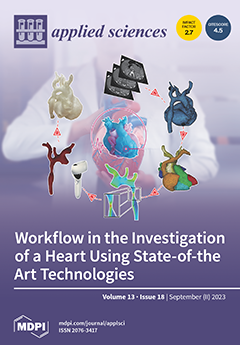Objective: The objective of this study was to investigate the association between BMI, days spent in hospital, blood loss, and surgery time in patients who suffered from isolated pelvic fractures and pelvic fractures with concomitant injuries (polytrauma patients). Methods: This study included 76
[...] Read more.
Objective: The objective of this study was to investigate the association between BMI, days spent in hospital, blood loss, and surgery time in patients who suffered from isolated pelvic fractures and pelvic fractures with concomitant injuries (polytrauma patients). Methods: This study included 76 consecutive patients who were admitted for pelvic ring fracture surgery between 2017 and 2022. The inclusion criteria were pelvic fractures and indications for operative treatment (LC II and III, APC II and III, and VS). The exclusion criteria were non-operative treatment for pelvic ring fractures, acetabular fractures and fractures requiring primary total hip arthroplasty (THA), and periprosthetic acetabular fractures. Demographic data were collected, including age (in years), sex, type of fracture according to Young–Burgess, date of injury and surgery, surgical approach and stabilization methods, mechanism of trauma, concomitant trauma in other regions, body mass index (BMI), blood transfusions, number of days spent in the hospital, and surgery duration. Results: Patients who suffered from a pelvic ring injury with concomitant injuries had a significantly greater amount of blood units transferred (1.02 units vs. 0.55 units), and the length of hospital stay was also longer compared to the mean results (5.84 days vs. 3.58 days),
p = 0.01 and
p = 0.001, respectively. Moreover, patients with a higher BMI had more frequent APC II and APC III fractures (
p = 0.012). Conclusions: This study demonstrates that polytrauma patients who suffered from pelvic ring injury are, indeed, at risk of blood transfusion in terms of greater units of blood and a longer duration of hospital stay. Moreover, BMI has an impact on pelvic ring fracture morphology. However, there is no doubt that there is an absolute need for further studies and investigations to provide better overall management of polytrauma patients with pelvic fractures.
Full article





